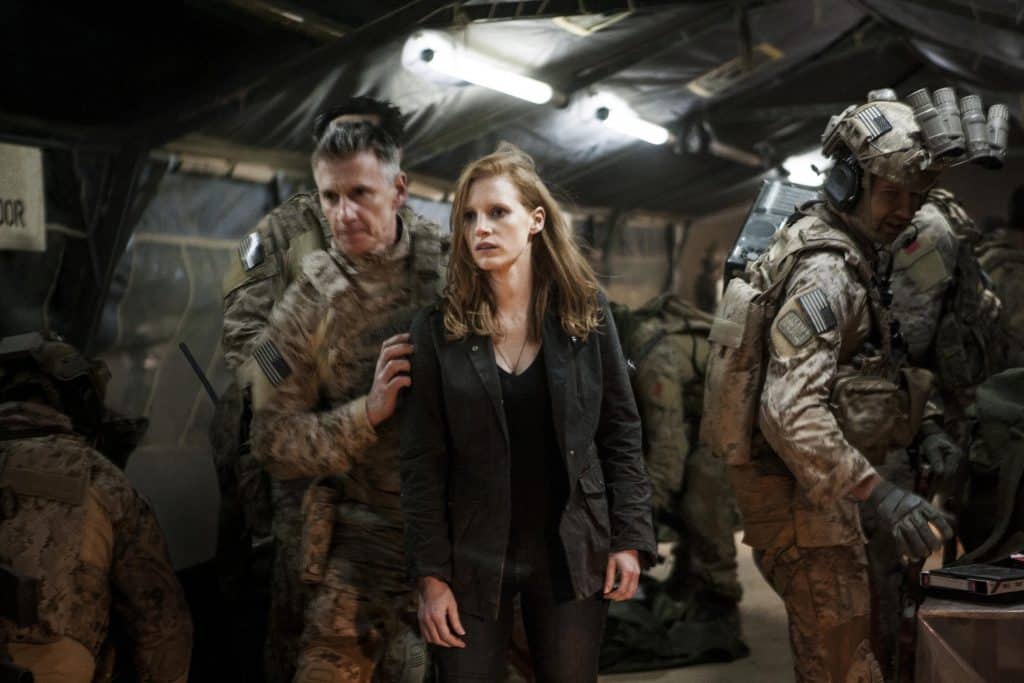Read also:
How to Watch FX Live Without CableHow To Watch AMC Without CableHow to Watch ABC Without CableHow to Watch Paramount Network Without CableEvery month, we at The Spool select a filmmaker to explore in greater depth — their themes, their deeper concerns, how their works chart the history of cinema, and the filmmaker’s own biography. In November we’re celebrating Kathryn Bigelow, the first female winner of a Best Director Academy Award, and her fascinating journey from indie genre films to blockbuster political dramas. Read the rest of our coverage here.
It’s impossible to talk about Zero Dark Thirty without talking about torture.
Released in 2012, Thirty originally began as the story of how U.S. Forces failed to capture Osama bin Laden during the Battle of Tora Bora. On the precipice of filming, however, real life interceded when SEAL Team Six successfully located and killed the al-Qaeda leader. Kathryn Bigelow, feeling as though the story she and screenwriter Mark Boal had set out to tell now felt moot, pivoted to instead capture the behind the scenes process that had led to the May 2011 mission. Drawing on the contacts that helped them write the first screenplay, the duo successfully wrote, shot, and edited the film in time for a December 2012 release and all for around 40 million dollars.
It turns out, though, that the process to capture the most wanted man on Earth—a process that unfolded over a decade and weaved its way through two administrations—was a very messy one indeed. Thirty’s exploration of that messiness including owning that the United States had engaged in torture while pursuing bin Laden.

This, in and of itself, was not news to the average American. What “drone strikes” were to Obama—and oddly nothing seems to be for Trump–“torture” was to the Bush Administration. A single word shortcut that connected with a litany of objections to how the Administration was handling foreign policy and intervention in the wake of September 11th. However, Americans had been so enthusiastic, so relieved, by bin Laden’s death that most had not paused to consider how we got there. Thus, Thirty cast shadows over what had been, previously, a nearly universally celebrated event.
The era of post-9/11 America that arguably went out with bin Laden’s demise was a strange beast. So much of America had become pro-torture over the years that seeing troops and the CIA use it on-screen did not bother many. Instead, the controversy arose from the anti-torture side out of concern that the film glorified extraordinary interrogation techniques. Actors like Martin Sheen and writers like Glenn Greenwald greeted the film’s release with protests and essays denouncing its stand on the issue.
The problem, in retrospect, comes from the fact that Thirty doesn’t take a stand on torture. Or rather, it doesn’t approach it on the black and white terms that the debate had largely embraced. The argument on torture, for years, held that either it got the job done and was therefore good or its use was inherently evil and, oh yeah, it doesn’t work anyway. The film instead forces viewers to sit with a greyer reality. The United States engaged in a cruel, inhumane practice, frequently directed it at people who had no information to give and cast a black mark on the country’s reputation. Also, torture did inevitably lead to some intel, often involved people that most Americans actively wished death upon, and thus engaging it frequently believed themselves to be doing a bad thing to prevent worse things from happening. Thirty provided no easy answers, only offered up a far more complex take on the decade long debate.
In the end, [Zero Dark Thirty] is more about how systems fail than it is about the evil men do.
Another reason the movie remains frustratingly opaque is Zero Dark Thirty isn’t a movie about torture. It is a movie where torture takes place, absolutely, but that is not truly where either Bigelow’s eye or Boal’s script wants to focus. It is, instead, a film about American intelligence writ large. The “sin” of the film, if you will, isn’t how the United States gained intelligence, but rather how it processed it. Bigelow and co. are less concerned with if the cornerstone piece of intel came from extraordinary interrogation than they are with how long the Americans had that information without using it. In the end, Thirty is more about how systems fail than it is about the evil men do.
Bigelow, along with Cinematographer Greig Fraser, aids and abets this point of view by casting an emotionally indifferent eye upon the proceedings. While not documentarian in its gaze, nor as statically removed as her work in The Loveless, the camera work evokes both. There is a sense of observation in the work. Yes, the film gives us a point of view character in Maya (Jessica Chastain), the CIA analyst who eventually connects the necessary dots, but we never actually see the world through her eyes. We are more like a companion always alongside her. We can guess at what she’s going through, how she’s feeling, and often be correct, but we never truly and fully know her.
This also, no doubt, furthered people’s objections to the movie. How can a film observe such hideous actions and remain apart from them? Is that not a statement in and of itself? The answer is, of course, yes. It is a statement. But it is a statement more in the form of a question. Zero Dark Thirty refuses to be the film that tells you how to feel about how we came to find and kill Osama bin Laden. Instead, it acts as a prosecutor. It lays out the evidence for the viewer, the choices, the mistakes, the people involved. Then, as we watch Maya break down, it asks you, “was it worth it?”
So…was it?